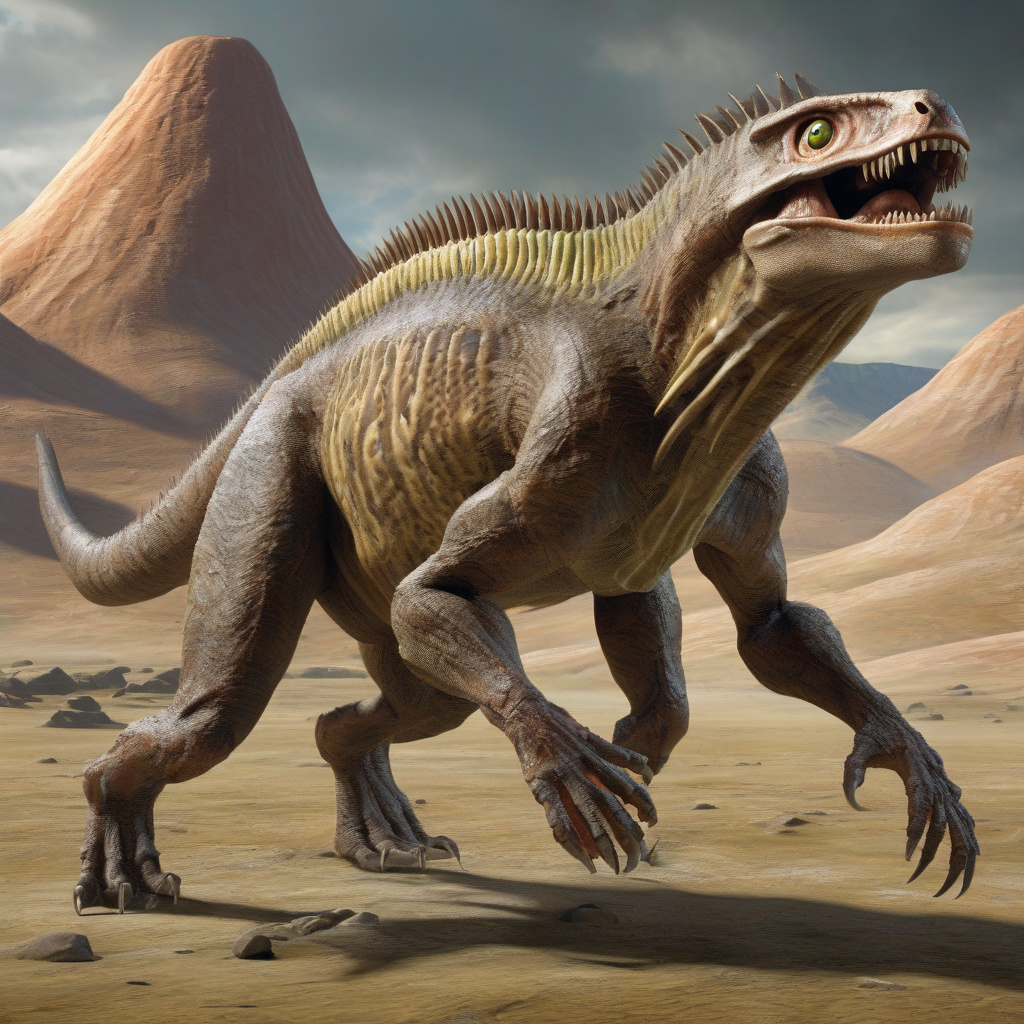Bizarre 3-Eyed Predator with Spiky Arms from 500 Million Years Ago Unearthed in Canada
Over 500 million years ago, a sea creature straight out of a futuristic sci-fi movie roamed the ancient waters of what is now Canada. This bizarre predator, with three eyes and spiky arms, has left scientists astonished at the complexity and peculiarity of life during the Cambrian period.
The creature, named Triclopsedus canadensis, was recently unearthed in the Burgess Shale deposit in the Canadian Rockies. This discovery sheds light on the incredible diversity of marine life that existed half a billion years ago. The fossilized remains of Triclopsedus reveal a creature unlike anything seen before, challenging our understanding of evolution and adaptation.
What sets Triclopsedus apart from other prehistoric creatures is its three eyes, a feature that is extremely rare in the animal kingdom. Two of its eyes are located in the usual position on either side of its head, while the third eye is positioned on top of its skull, giving it a unique and panoramic view of its environment. Scientists believe that this third eye may have helped Triclopsedus detect predators or prey from above, providing it with a significant evolutionary advantage.
In addition to its three eyes, Triclopsedus is adorned with spiky arms that are lined with sharp, barb-like structures. These arms were likely used for capturing and immobilizing its prey, much like the tentacles of a modern-day octopus. The discovery of these spiky arms has led researchers to speculate about the hunting and feeding behavior of Triclopsedus, painting a vivid picture of a ruthless and efficient predator that ruled the ancient seas.
The unearthing of Triclopsedus in Canada highlights the importance of paleontological research in understanding the history of life on Earth. By studying creatures like Triclopsedus, scientists can piece together the puzzle of evolution and gain insights into the origins of modern-day species. This discovery also underscores the need to protect and preserve fossil-rich sites like the Burgess Shale, which hold invaluable clues to our planet’s distant past.
As we marvel at the strange and wondrous creatures that once inhabited our planet, it becomes clear that the natural world is full of surprises and mysteries waiting to be uncovered. Triclopsedus serves as a reminder of the endless possibilities of evolution and the beauty of biodiversity, inspiring us to continue exploring and learning about the wonders of life on Earth.
In conclusion, the unearthed remains of Triclopsedus canadensis in Canada offer a fascinating glimpse into the distant past, where a 3-eyed predator with spiky arms reigned supreme in the ancient seas. This extraordinary discovery pushes the boundaries of our imagination and challenges our assumptions about the nature of prehistoric life, leaving us in awe of the wonders of evolution.
#Triclopsedus #PrehistoricDiscovery #BurgessShale #AncientPredator #CanadianFossils












